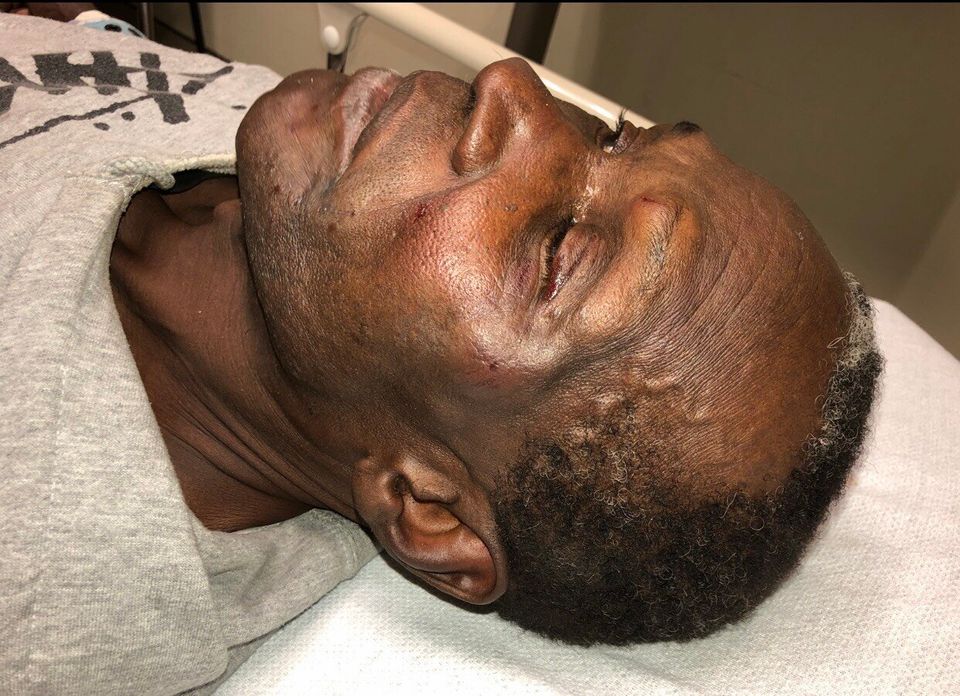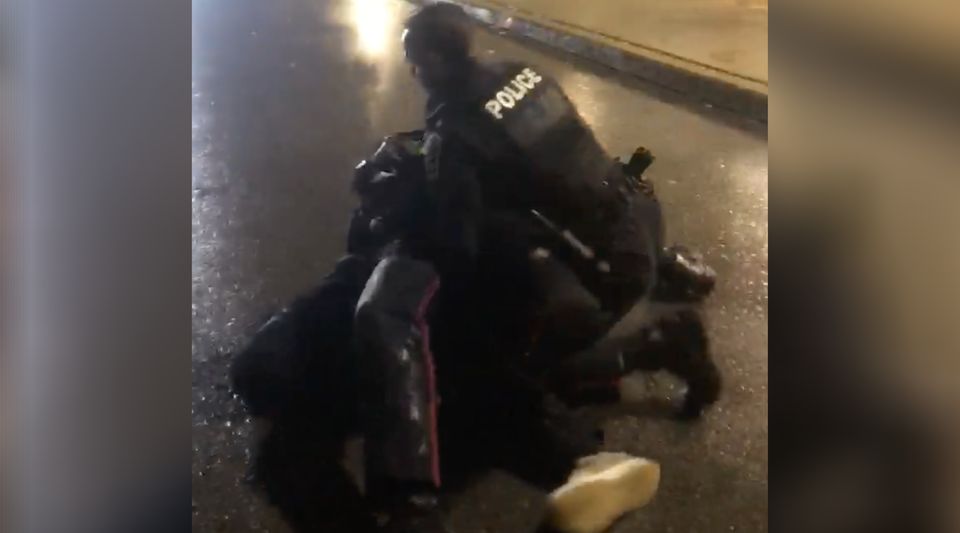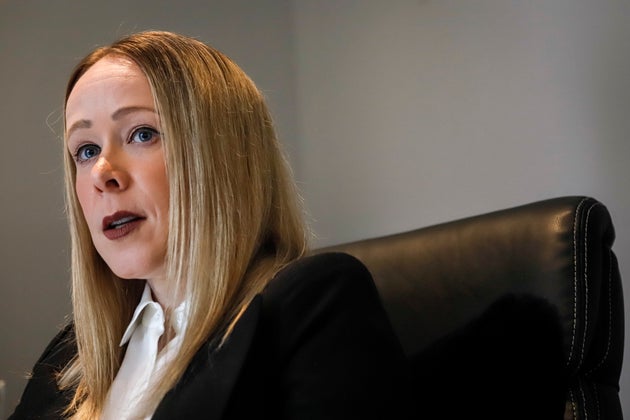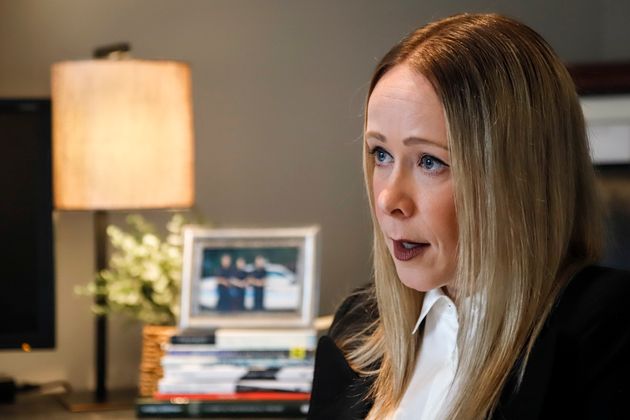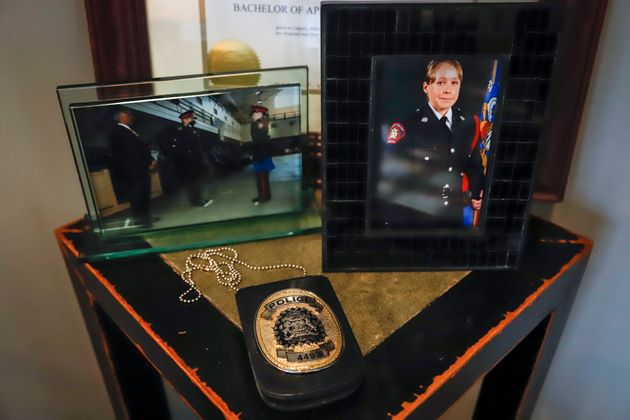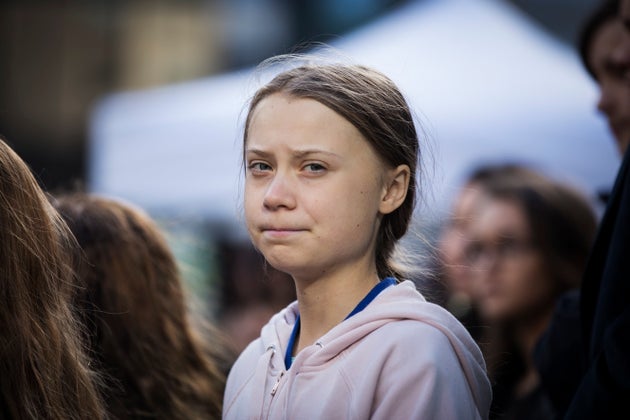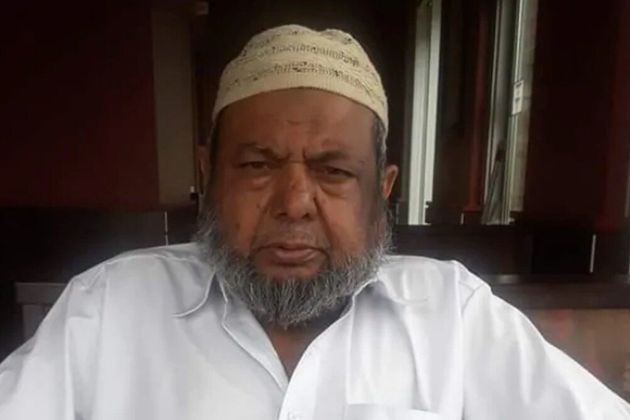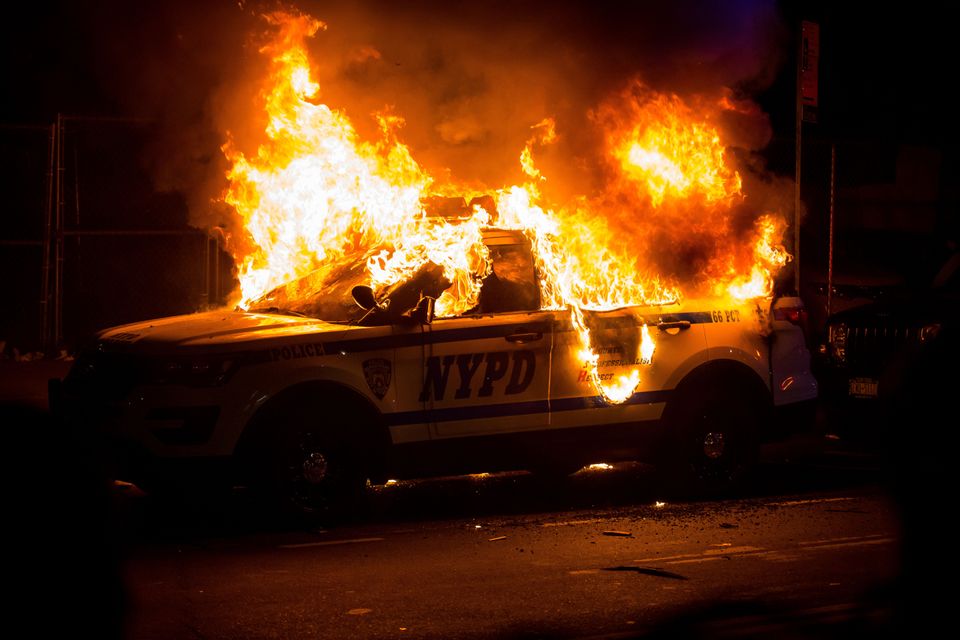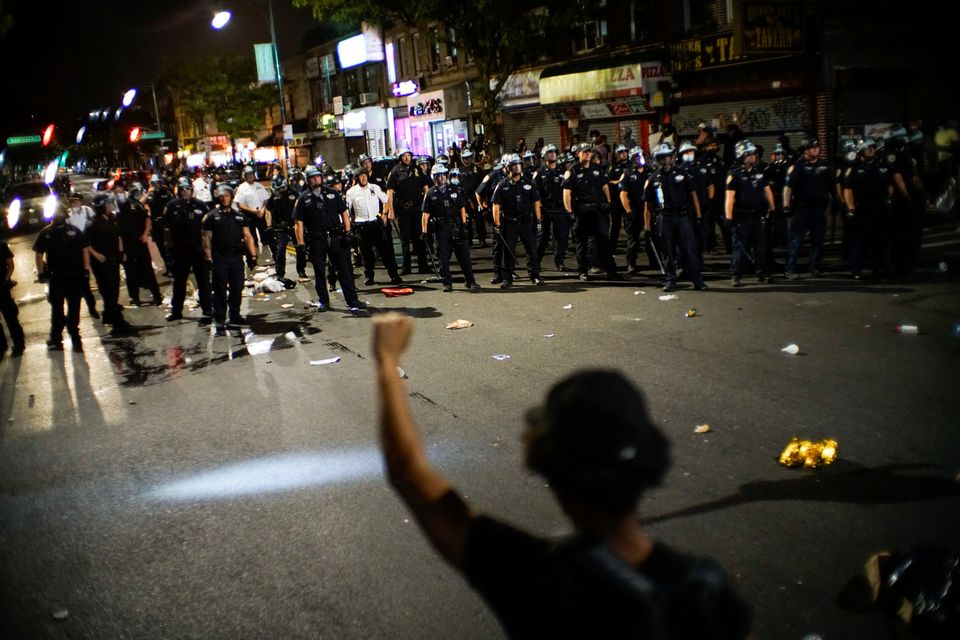Defunding The Police Will Save Black And Indigenous Lives In Canada
If we truly want to effect change that could stop police killings of Black people, we need to have this conversation.
By Sandy Hudson, Special To HuffPost 06/03/2020

GRAHAM HUGHES/CANADIAN PRESS
Police push back protesters during a demonstration on May 31, 2020 calling for justice in the death of George Floyd and victims of police brutality in Montreal.
As I write, demonstrations are raging across North America in protest of continued police violence against Black people. The police killings of Black people have sparked resistance uprisings, from Whitehorse to Miami and seemingly everywhere in between.
Demonstrators are calling for justice for Regis Korchinski-Paquet in Toronto, who fell to her death while police were in her apartment, D’Andre Campbell in Brampton, Ont., George Floyd in Minneapolis, Breonna Taylor in Louisville, and countless others who have faced anti-Black police brutality.
If we truly want to effect change that could stop police killings of Black people, we must have a conversation about defunding the police.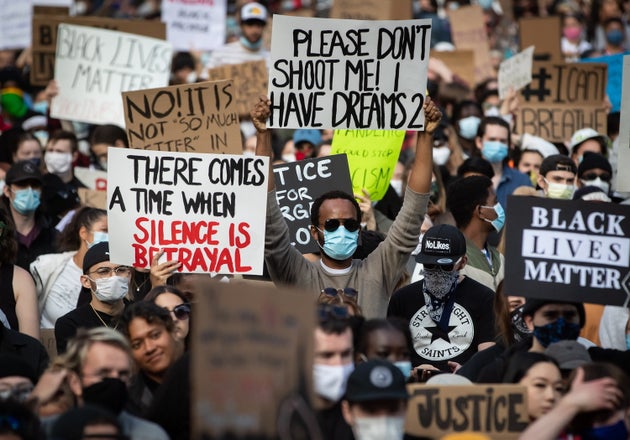
THE CANADIAN PRESS/DARRYL DYCK
As I write, demonstrations are raging across North America in protest of continued police violence against Black people. The police killings of Black people have sparked resistance uprisings, from Whitehorse to Miami and seemingly everywhere in between.
Demonstrators are calling for justice for Regis Korchinski-Paquet in Toronto, who fell to her death while police were in her apartment, D’Andre Campbell in Brampton, Ont., George Floyd in Minneapolis, Breonna Taylor in Louisville, and countless others who have faced anti-Black police brutality.
If we truly want to effect change that could stop police killings of Black people, we must have a conversation about defunding the police.

THE CANADIAN PRESS/DARRYL DYCK
Thousands of people gather for a peaceful demonstration in support of George Floyd and Regis Korchinski-Paquet and protest against racism, injustice and police brutality, in Vancouver on May 31, 2020.
Perhaps you are thinking to yourself, “What about violent crime?”
I hear you. And I want you to consider this simple fact: police do not prevent violence. What we need in the event of violent crime is a service that will effectively respond to it, stop it from happening if it is ongoing, and investigate the circumstances surrounding it.
This is a conversation about safety, and the mechanism through which we as a society will provide safety for one another.
Policing is ill-equipped to suit these needs.
When victims are not the right kinds of victims, police have utterly failed. When the queer community in Toronto told police there was a serial killer targeting racialized queer men in the Church Street village, the police openly deniedthere was a serial killer and did not take the threat seriously. This allowed serial killer Bruce MacArthur to get away with murdering at least eight men over at least seven years.
In British Columbia, police failed to apprehend serial killer Robert Pickton for over 20 years, and this failure meant that Pickton was able to murder 49 women. The majority of these women were Indigenous, and police routinely refuse to take the disappearance of Indigenous women seriously. When Toronto police attended to the suspicious death of Black trans woman Sumaya Dalmarin 2015, they closed the investigation without ruling it a homicide or releasing a cause of death after social media outcry.
Defunding the police can free up funding that we can reinvest in services that provide real safety.
Black communities interact with police regularly because we live in neighbourhoods police target. We are experts in the ways that police can brutalize and inflict violence upon us. Their presence is no assurance of safety in Black communities. This is often true for Indigenous communities and communities living in poverty as well.
There are other communities who do not interact with police regularly. Wealthier, non-Black, non-Indigenous, privileged communities tend to feel safe because they have a rarely used option to call the police when they feel their safety is threatened. But, they are generally not interacting with police; their communities are not policed in the same way, and they are not targeted for criminalization.
Alternatives to policing
Instead of relying on police, we could rely on well-trained social workers, sociologists, forensic scientists, doctors, researchers and other well-trained individuals to fulfill our needs when violent crimes take place. In the event that intervention is required while a violent crime is ongoing, a service that provides expert specialized rapid response does not need to be connected to an institution of policing that fails in every other respect. Such a specific tactical service does not require the billions of dollars we waste in ineffective policing from year to year.
Defunding the police can free up funding that we can reinvest in services that provide real safety for both kinds of communities. The communities that are constantly exposed to police violence should not be deprived of effective safety and security services simply because more privileged communities feel safer when calling the police is an option.
We can rethink the way that we create safety in our communities by creating alternative services that truly create safety and security for everyone. Black Lives Matter - Toronto has been advocating for this since our inception, alongside our global counterparts and other Black justice organizations.
Right now, the only emergency option available for most people who are experiencing mental distress is to call 911. Both D’Andre Campbell and Regis Korchinski-Paquet died while the police were attending to calls about their mental distress.
Couldn’t we create a new emergency service that connects us with unarmed, mental health emergency service workers specifically trained to provide the health and social care required in crisis situations? It’s happening already, with front-line programs active and working in conjunction with police in parts of the U.K. and in states such as Oregon, where the CAHOOTS program has been active since 1989.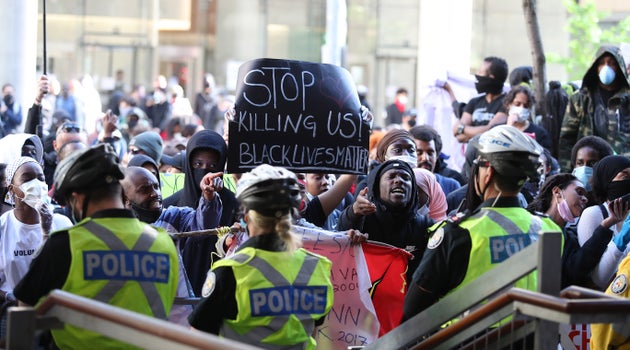
STEVE RUSSELL VIA GETTY IMAGES
Perhaps you are thinking to yourself, “What about violent crime?”
I hear you. And I want you to consider this simple fact: police do not prevent violence. What we need in the event of violent crime is a service that will effectively respond to it, stop it from happening if it is ongoing, and investigate the circumstances surrounding it.
This is a conversation about safety, and the mechanism through which we as a society will provide safety for one another.
Policing is ill-equipped to suit these needs.
When victims are not the right kinds of victims, police have utterly failed. When the queer community in Toronto told police there was a serial killer targeting racialized queer men in the Church Street village, the police openly deniedthere was a serial killer and did not take the threat seriously. This allowed serial killer Bruce MacArthur to get away with murdering at least eight men over at least seven years.
In British Columbia, police failed to apprehend serial killer Robert Pickton for over 20 years, and this failure meant that Pickton was able to murder 49 women. The majority of these women were Indigenous, and police routinely refuse to take the disappearance of Indigenous women seriously. When Toronto police attended to the suspicious death of Black trans woman Sumaya Dalmarin 2015, they closed the investigation without ruling it a homicide or releasing a cause of death after social media outcry.
Defunding the police can free up funding that we can reinvest in services that provide real safety.
Black communities interact with police regularly because we live in neighbourhoods police target. We are experts in the ways that police can brutalize and inflict violence upon us. Their presence is no assurance of safety in Black communities. This is often true for Indigenous communities and communities living in poverty as well.
There are other communities who do not interact with police regularly. Wealthier, non-Black, non-Indigenous, privileged communities tend to feel safe because they have a rarely used option to call the police when they feel their safety is threatened. But, they are generally not interacting with police; their communities are not policed in the same way, and they are not targeted for criminalization.
Alternatives to policing
Instead of relying on police, we could rely on well-trained social workers, sociologists, forensic scientists, doctors, researchers and other well-trained individuals to fulfill our needs when violent crimes take place. In the event that intervention is required while a violent crime is ongoing, a service that provides expert specialized rapid response does not need to be connected to an institution of policing that fails in every other respect. Such a specific tactical service does not require the billions of dollars we waste in ineffective policing from year to year.
Defunding the police can free up funding that we can reinvest in services that provide real safety for both kinds of communities. The communities that are constantly exposed to police violence should not be deprived of effective safety and security services simply because more privileged communities feel safer when calling the police is an option.
We can rethink the way that we create safety in our communities by creating alternative services that truly create safety and security for everyone. Black Lives Matter - Toronto has been advocating for this since our inception, alongside our global counterparts and other Black justice organizations.
Right now, the only emergency option available for most people who are experiencing mental distress is to call 911. Both D’Andre Campbell and Regis Korchinski-Paquet died while the police were attending to calls about their mental distress.
Couldn’t we create a new emergency service that connects us with unarmed, mental health emergency service workers specifically trained to provide the health and social care required in crisis situations? It’s happening already, with front-line programs active and working in conjunction with police in parts of the U.K. and in states such as Oregon, where the CAHOOTS program has been active since 1989.

STEVE RUSSELL VIA GETTY IMAGES
Activists and protesters rally in front of Toronto police headquarters on May 30, 2020 after the death of 29-year-old Regis Korchinski-Paquet.
We can also decriminalize activities that are currently against the law, and reinvest the money we save on unnecessary policing and put it into programs supporting the security of communities who need it. The decriminalization of cannabis and our response to the opioid crisis show how a public-health approach to drug use is more effective than policing to support people who need help.
As another example, some public transportation systems use police to ensure that each passenger pays their fare. If we defund the police, we could reinvest our savings to help make public transit free. Fare evasion could no longer be a crime, and the policing of passengers would be unnecessary.
The minor services police provide — adherence to bylaw infractions, traffic services, attending to noise complaints — can be enforced by civilian services. In Ontario in 2015, Marc Ekamba-Boekwa was shot at 19 times and killed by Peel police after a noise complaint was made in his Mississauga, Ont. public-housing complex. Do we really need police attending to noise complaints with lethal force?
The very purpose of the police has always been antithetical to the safety of Black and Indigenous people.
In several large cities across Canada, policing accounts for some of the largest municipal budget expenditures. Let’s defund the police and create budgets that truly reflect our priorities. Perhaps then we could fund guaranteed access to housing, increased adult support for children in schools, and other services that create true safety and security.
Each year, police budgets generally increase. But rather than increased safety, all we see is increased militarization and criminalization. Police have been caught infringing on our privacy rights by implementing surveillance techniquesthat can access our smartphones. They have used the funding they receive to purchase stealth emergency vehicles, and to purchase increasingly militarized devices to harm civilians, including assault-style weaponry and sound cannonsin the case of the Toronto Police Service.
Why do we need these services? The police have utterly failed to deliver on their evergreen promise to create safety by being “tough on crime.”
But they have continued their original purpose of harming us. The institution of modern policing was created in France as a mechanism to protect the property of wealthy men — including enslaved people. The police acted as slave catchers to kidnap Black people who had liberated themselves from slaveowners.
In Canada, this mandate was expanded when the RCMP was created in 1873 to “free up land” of Indigenous people to make way for white settlement.
The very purpose of the police has always been antithetical to the safety of Black and Indigenous people. Why continue to try to reform this irredeemable institution?
Let’s not be constrained by an inability to imagine a system beyond the one that currently exists. We can do far better than the institution of policing to create safety for all of us. It’s high time we did so.
We can also decriminalize activities that are currently against the law, and reinvest the money we save on unnecessary policing and put it into programs supporting the security of communities who need it. The decriminalization of cannabis and our response to the opioid crisis show how a public-health approach to drug use is more effective than policing to support people who need help.
As another example, some public transportation systems use police to ensure that each passenger pays their fare. If we defund the police, we could reinvest our savings to help make public transit free. Fare evasion could no longer be a crime, and the policing of passengers would be unnecessary.
The minor services police provide — adherence to bylaw infractions, traffic services, attending to noise complaints — can be enforced by civilian services. In Ontario in 2015, Marc Ekamba-Boekwa was shot at 19 times and killed by Peel police after a noise complaint was made in his Mississauga, Ont. public-housing complex. Do we really need police attending to noise complaints with lethal force?
The very purpose of the police has always been antithetical to the safety of Black and Indigenous people.
In several large cities across Canada, policing accounts for some of the largest municipal budget expenditures. Let’s defund the police and create budgets that truly reflect our priorities. Perhaps then we could fund guaranteed access to housing, increased adult support for children in schools, and other services that create true safety and security.
Each year, police budgets generally increase. But rather than increased safety, all we see is increased militarization and criminalization. Police have been caught infringing on our privacy rights by implementing surveillance techniquesthat can access our smartphones. They have used the funding they receive to purchase stealth emergency vehicles, and to purchase increasingly militarized devices to harm civilians, including assault-style weaponry and sound cannonsin the case of the Toronto Police Service.
Why do we need these services? The police have utterly failed to deliver on their evergreen promise to create safety by being “tough on crime.”
But they have continued their original purpose of harming us. The institution of modern policing was created in France as a mechanism to protect the property of wealthy men — including enslaved people. The police acted as slave catchers to kidnap Black people who had liberated themselves from slaveowners.
In Canada, this mandate was expanded when the RCMP was created in 1873 to “free up land” of Indigenous people to make way for white settlement.
The very purpose of the police has always been antithetical to the safety of Black and Indigenous people. Why continue to try to reform this irredeemable institution?
Let’s not be constrained by an inability to imagine a system beyond the one that currently exists. We can do far better than the institution of policing to create safety for all of us. It’s high time we did so.
Sandy Hudson Co-founder, Black Lives Matter - Toronto. Political strategist, communications powerhouse, writer
